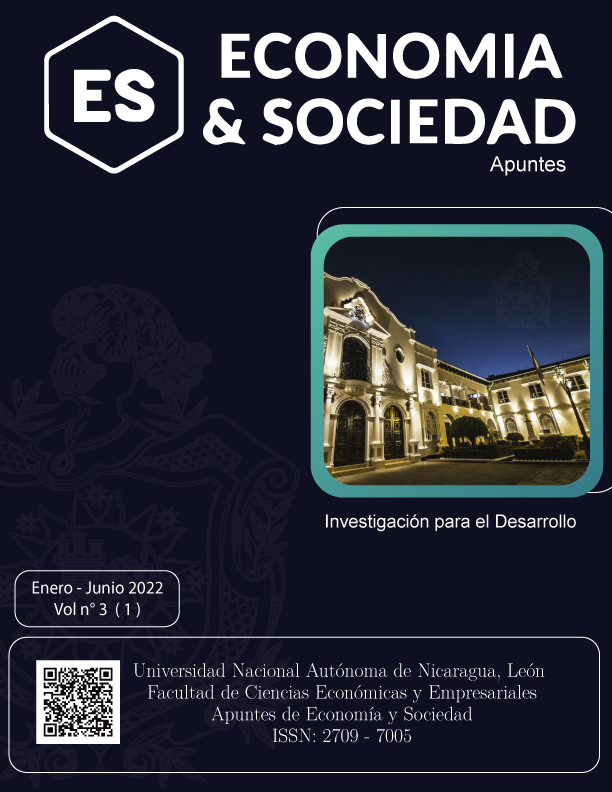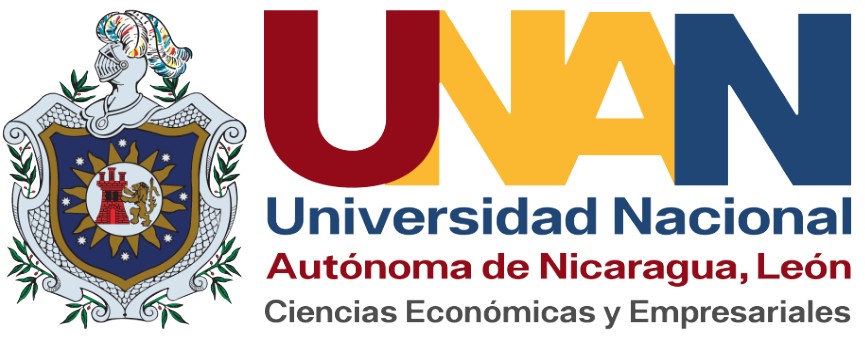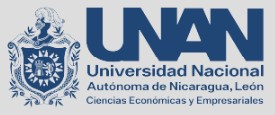Diagnosis of perception of corporate social responsibility. Graphic presentation and strategic proposals: case study
DOI:
https://doi.org/10.5377/aes.v3i1.14600Keywords:
CSR, diagnosis, perception, infographicsAbstract
This article is the result of a multidisciplinary educational experience, its purpose was to elaborate perception tools to obtain indicators and subsequent graphic presentation of the needs of the community around the company. For the development of the project, a summary adaptation of the model of University Social Responsibility (USR) of Dr. François Vallaeys, the business self-diagnostic tools of the Foundation of Entrepreneurs Chihuahuenses (FECHAC) and the self-assessment model of Academy B. Qualitative information was obtained from a SWOT analysis, which was analyzed and graphed to be finally presented through the development of infographic design models, as clear as possible to a very diverse public that included managers, workers and the immediate social environment. The company that participated in the project and that was taken as a case study had the purpose of obtaining the distinction of Corporate Social Responsibility (CSR), however, it was found that it had issues in legal, social, and environmental areas, therefore, it was proposed the implementation of a perception assessment by its stakeholders as a way to demonstrate the need of transformation of the management area. It was observed that the results presented in infographic form were better understood, and opportunities for immediate action were proposed; the final proposals were taken from the opinions of the stakeholders themselves, however, the company gave up because it was not enough incentive to obtain the badge due to the profound changes it would have to make in the future.
Downloads
References
Alfaguara Infantil y Juvenil. (2006). La infografía. Grupo Santillana. Recuperado de http://www.gruposantillana.compe/planlector/la_infografia.pdf
Clapers, J. (1998). Los gráficos, desde fuera de la redacción. Revista Latina de Comunicación Social, 9. En línea: http://www.ull.es/publicaciones/latina/a/36infojordi.htm
Colle, R. (1998). Estilos o tipos de infógrafos. Revista Latina de Comunicación Social, 12. Recuperado de: https://mdc.ulpgc.es/utils/getfile/collection/rldcs/id/256/filename/533.pdf
Cortés, J. (2014). Infografía, una innovación necesaria en la tarea comunicacional del Estado. Revista Transparencia & Sociedad, (No. 2) pp. 67-80. https://archives.cplt.cl/artic/20140701/asocfile/20140701161427/t_s_n2___web.pdf
Fundación del Empresario Chihuahuense, A.C. (FECHAC). (2020) https://fechac.org.mx
Lallana, F. (1999). Diseño y color infográfico. Revista Latina de Comunicación Social, 13. En línea: http://www.ull.es/publicaciones/latina/a1999c/150lallana.htm
Reinhardt, N. (2007). Infografía didáctica: producción interdisciplinaria de infografías didácticas para la diversidad cultural [Tesis de maestría no publicada]. Universidad Nacional de Misiones.
Sistema B. (2021). https://www.sistemab.org/
Vallaeys, F., De La Cruz, C. y Sasia, P. (2008) Responsabilidad social universitaria. Manual de primeros pasos. México, Editorial BID y Mc Graw Hill.
Published
How to Cite
Issue
Section
License
Copyright (c) 2022 Array

This work is licensed under a Creative Commons Attribution-NonCommercial-ShareAlike 4.0 International License.














